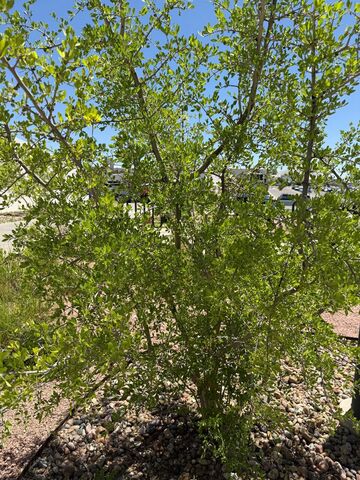
When I approach the door to the San Juan College fitness center in Farmington, NM, where I walk the indoor track, beautiful vegetation lines both sides of the wide cement sidewalk. There is an array of colorful flowers as well as several young trees.
They are desert olives a small tree native to the Southwestern United States. It takes maybe five or six years for the trees to produce fruit, clusters of purple-black drupes that are edible for humans but taste kind of bitter. Because the wood is light, tough and flexible, some people like to use it to build furniture and make crafts.
When I walk by the desert olive trees on my way to the fitness center, I enjoy noticing their small light green leaves. They reflect the sunlight and create almost a lacy view of the buildings and landscape behind them. These young trees don't have berries yet. They'll need to grow a few more years first.
I've been told that if you decide to taste a berry, be prepared to pucker up. They can be pretty bitter. Some people say if you eat several berries at the same time, their bitter taste isn't so overpowering. I'm not sure I'd want to be that adventurous. What's a little bitter to some might make me take huge gulps of water to drown out the taste.
If you decide to plant a desert olive tree in your yard, choose a sunny spot. They like at least half a day of direct sunlight. Though they can handle shade, desert olive trees really do like the sun.
For me, I'm just happy to enjoy walking by the young desert olive trees on my way to the college fitness center. I enjoy them again after I've walked a mile or two on the indoor track and head back to my car, tired, sweaty and thankful for the shade the trees provide.
